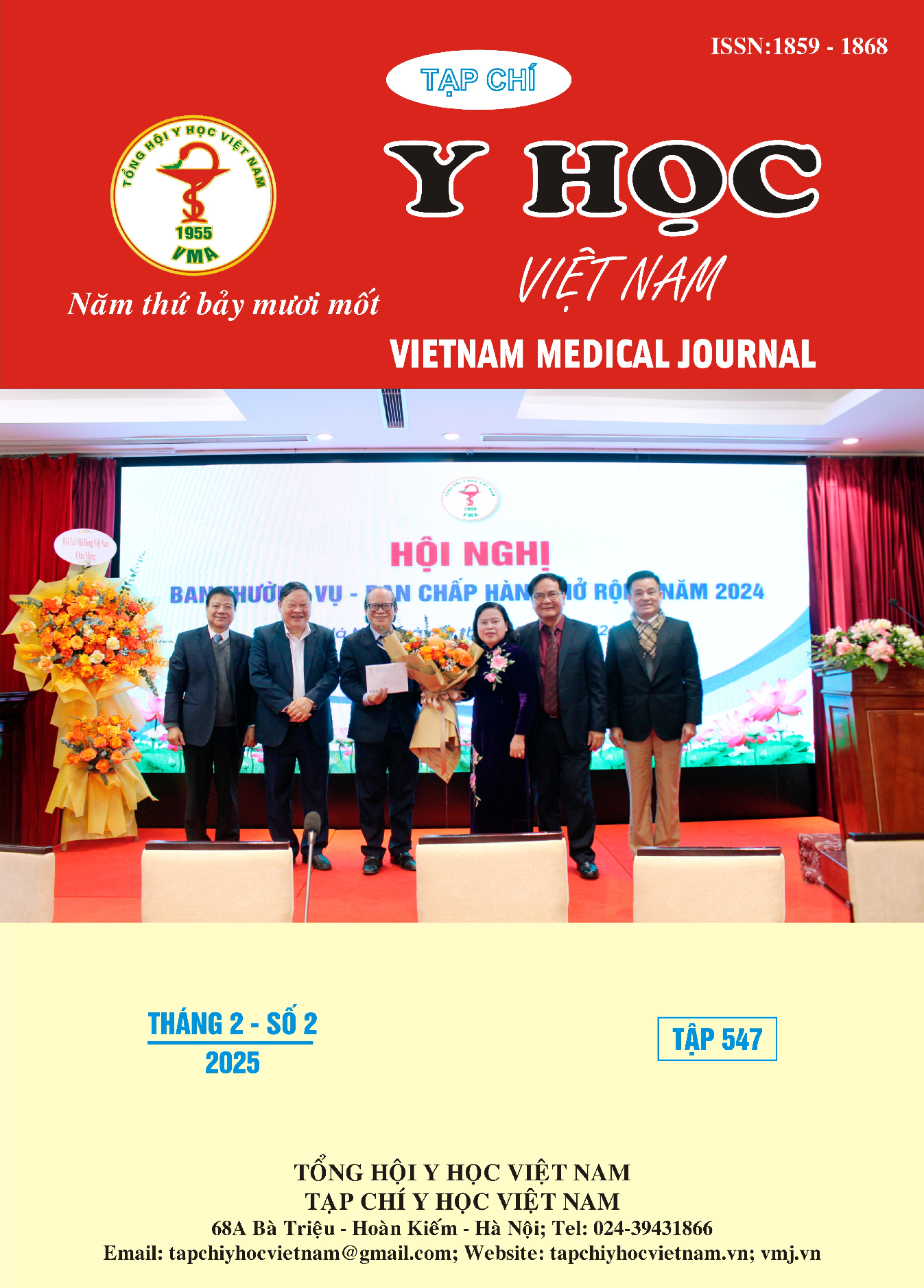RESULTS OF TOTALLY EXTRAPERITONEAL LAPAROSCOPIC SURGERY FOR INGUINAL HERNIA REPAIR IN PATIENTS WITH CARDIOVASCULAR DISEASES
Main Article Content
Abstract
Objectives: To evaluate the outcomes of inguinal hernia repair using the totally extraperitoneal (TEP) laparoscopic approach in patients with cardiovascular diseases at the Department of Urology and Andrology, E Hospital, during the period 2021–2022. Subjects and methods: A descriptive observational study on 50 patients with cardiovascular diseases who underwent inguinal hernia repair via the TEP laparoscopic approach at the Department of Urology and Andrology, E Hospital, from January 2021 to December 2022. Results: A total of 50 patients were included, the mean age of the patients was 70.2 years. All patients (100%) were male. Regarding medical history, 96% had cardiovascular conditions, including 82% with hypertension, 14% with arrhythmias, 16% with coronary artery disease, 2% with pacemaker implantation, 4% with heart failure, 2% with valvular heart disease, 2% with atrial septal defect, and 4% with aortic aneurysm/aortic replacement. Five patients were on anticoagulant therapy, all using antiplatelet agents. The distribution of hernia sides included 40% on the right side, 44% on the left side, and 16% bilateral; 63.79% were direct hernias, while 36.21% were indirect. Fourteen cases involved concurrent procedures with inguinal hernia repair. The average surgical time was 91 minutes (range: 30–250 minutes). During surgery, one case of uncontrollable hypertension (2%) and one case of inferior epigastric artery injury (2%) were reported. Postoperative hospital stay averaged 4.22 days. Early postoperative complications included fever, urinary retention, wound seroma (8%), and one case of postoperative angina (2%). Conclutions: Laparoscopic totally extraperitoneal (TEP) repair for inguinal hernia is a safe and effective surgical option for patients with stable, pretreated cardiovascular disease.
Article Details
Keywords
inguinal hernia, TEP, cardiovascular disease.
References
2. Ho CH, Wu CC, Wu CC, Tsai YC. Laparoscopic total extraperitoneal inguinal hernia repair is safe and feasible in patients with continuation of antithrombotics. J Minim Access Surg. 2019 Oct-Dec;15(4): 299-304. doi: 10.4103/jmas. JMAS_128_18. PMID: 30106020; PMCID: PMC6839354.
3. Wakasugi M, Akamatsu H, Yoshidome K, Tori M, Ueshima S, Omori T, Tei M, Masuzawa T, Iwamoto T, Nishida T. Totally extraperitoneal inguinal hernia repair in patients on antithrombotic therapy: a retrospective analysis. Surg Today. 2013 Aug;43(8):942-5. doi: 10.1007/s00595-013-0567-8.
4. Chibata M, Daronch OT. Assessment of postoperative risk of complications on inguinal hernioplasty and its relation to risk factors. Rev Assoc Med Bras (1992). 2020 May;66(5):623-629. doi: 10.1590/1806-9282.66.5.623. Epub 2020 Jul 3. PMID: 32638974.
5. John F. Skinner, Morton Lee Pearce. Surgical risk in the cardiac patient, Journal of Chronic Diseases, Volume 17, Issue 1, 1964, Pages 57-72, ISSN 0021-9681, https://doi.org/10.1016/0021-9681(64)90039-6.


